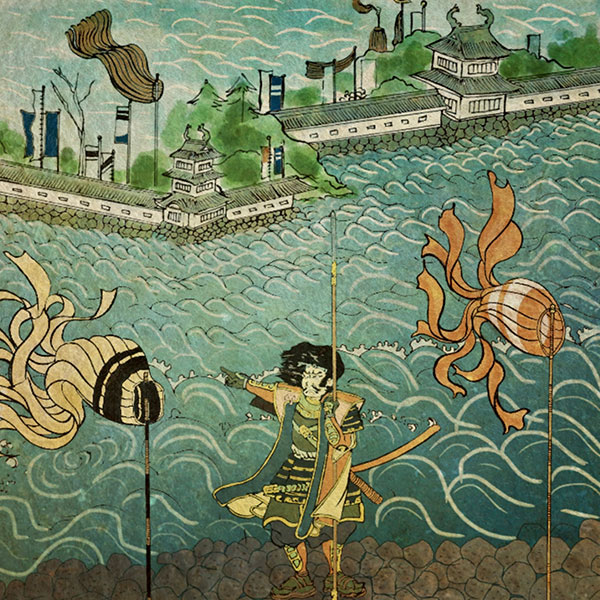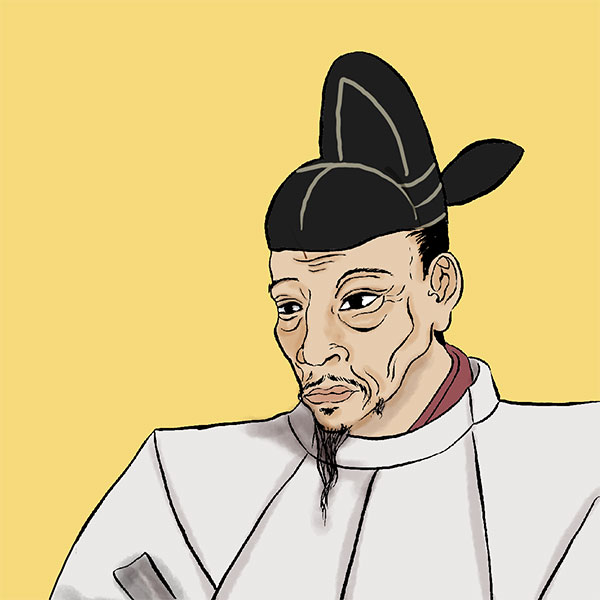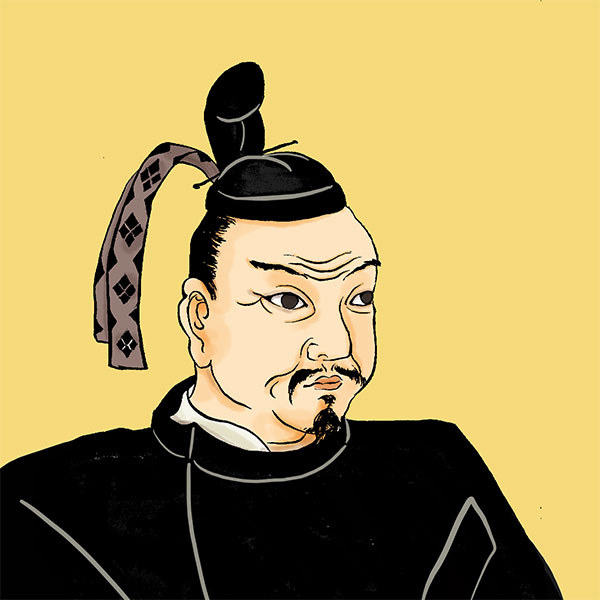Battle of Bitchu Takamatsu Castle (2/2)Kuroda Kanbei's water attack

Battle of Bitchu Takamatsu Castle
- Article category
- case file
- Incident name
- Battle of Bitchu Takamatsu Castle (1582)
- place
- Okayama Prefecture
- Related castles
- people involved
In the meantime, Mori reinforcements finally arrived, and Motoharu Yoshikawa and Takakage Kobayakawa took up positions on Mt. Koshin, south of the castle, and Takakage Kobayakawa on Mt. Hinashi, further south, but there was nothing they could do. Bitchu Takamatsu Castle's supply route for supplies was cut off, the environment deteriorated due to flooding, and the morale of the soldiers declined. Meanwhile, the lord of the castle, Muneharu Shimizu, was desperately encouraging his soldiers while also patrolling the castle grounds to take measures to prevent traitors from emerging.
By the way, after the successful water attack, Hideyoshi sent a messenger to Nobunaga requesting reinforcements. As expected of Hideyoshi, he is considerate of Nobunaga without taking all the credit. In response to Hideyoshi, Nobunaga decided to send Mitsuhide Akechi as reinforcements and began preparing to go to war himself. At that time, Nobunaga probably never dreamed that Mitsuhide would betray him.
Battle of Bitchu Takamatsu Castle ④ In the middle of peace negotiations, the Honnoji Incident breaks out
Let's return the stage to Bitchu Takamatsu Castle. Toyotomi Hideyoshi, who had successfully carried out the water attack, began peace negotiations with the Mouri side, while still besieging Takamatsu Castle. The Mori side also dispatched a military sergeant in charge of diplomacy, Kei Ankokuji, to Kuroda Kanbei. As conditions for peace, Hideyoshi offered the safety of the castle soldiers and the transfer of five Chinese countries (Bicchu, Bingo, Mimasaka, Hoki, and Izumo), but in addition to the five Chinese countries, Hideyoshi demanded seppuku from Muneharu Shimizu.Negotiations failed. It's over.
If things continued like this, peace negotiations would move forward with Hideyoshi in an advantageous position...I'm sure everyone thought so. However, on the night of June 3rd (and early morning of the 4th), Hideyoshi learned shocking news. When they captured the messenger sent by Mitsuhide Akechi to the Mori side, they obtained a secret letter that stated that Mitsuhide had killed Nobunaga Oda during the Honnoji Incident, and that Mitsuhide and the Mori side had proposed a pincer attack on Hideyoshi. is.
Yes, Mitsuhide, who was supposed to be on his way to support Hideyoshi, headed to Honnoji Temple, where Nobunaga was. Mitsuhide started a rebellion. When Hideyoshi learned of this, he was shocked and cried. However, Kuroda Kanbei calmly whispered to Hideyoshi, ``We have a chance to take control of the country (by defeating Mitsuhide),'' and there is an episode that tells us that this led to Hideyoshi becoming wary of Kanbei. Masu.
When Hideyoshi learned of the Honnoji Incident, he thoroughly concealed Nobunaga's death and immediately moved to make peace with the Mori side. The following day, June 4th, he met Ankokuji Keiji again and agreed to cede territory to the three countries of Bicchu, Mimasaka, and Hoki on the condition that peace be concluded within three days, and that if Muneharu committed suicide, the castle soldiers would I offer this as a condition of helping.
The Mori side would like to somehow help their loyal military commander, Muneharu Shimizu, but they have no choice but to accept this condition. The castle that served as their stronghold was lost in successive battles, and the Mori side no longer had the strength to continue fighting. Muneharu himself decided to commit suicide, saying, ``If my head could save the lives of my master and his subordinates.''
Battle of Bitchu Takamatsu Castle ⑤ Seppuku of Muneharu Shimizu
On the afternoon of June 4th, after getting dressed and having a farewell banquet, Muneharu Shimizu boarded a small boat and rowed out of the castle toward Toyotomi Hideyoshi's camp. After dancing the Noh play ``Seiganji'' on the boat, he called out his death haiku and committed seppuku. He passed away at the age of 46. His death haiku was, ``Now is the time to cross the floating world and leave your name as a samurai on the moss of Takamatsu.'' It is said that Hideyoshi praised Muneharu for his splendid seppuku, a mirror image of a samurai, and gave him a warm burial. At this time, Muneharu's older brother Tsukisei Nyudo, his younger brother Munetada Nanba, and Takakage Kobayakawa's vassal Shinga Suechika also committed suicide. Ichimasa Kokufu, who assisted the four men, also committed suicide.
Why did Hideyoshi persist in having Muneharu commit suicide to the end? During peace negotiations, even though the Mori side refused to commit suicide, why did they still want Muneharu's head, even if it meant reducing the amount of territory they would receive? Now we can only speculate about Hideyoshi's intentions, but it appears that the Honnoji Incident was the key.
From Hideyoshi's point of view, it would have been easy to imagine that the Mouri side would immediately break the peace agreement and try to pursue Hideyoshi after learning of the Honnoji Incident. Muneharu's head was necessary as a deterrent to prevent this from happening. The Mori side was extremely reluctant to waste the peace agreement they had made in exchange for the life of their loyal samurai, Muneharu. I think it was partly to show him that he was a loser, but Hideyoshi strongly demanded that Muneharu commit suicide in order to reduce the risk of follow-up attacks. Perhaps because of this, the Mori side did not move even after learning of the Honnoji Incident.
“China’s Great Return” after the Battle of Bitchu Takamatsu Castle
After the Battle of Bitchu Takamatsu Castle ended in peace, Toyotomi Hideyoshi immediately returned to Kyoto. He stationed Ietsugu Sugihara at Bitchu Takamatsu Castle and departed for Kyoto on June 6 with an army of approximately 20,000 men. After covering a distance of approximately 200 km in 10 days, they defeated Mitsuhide Akechi's army at the Battle of Yamazaki on June 13th.
On the other hand, the Mori side learned of the Honnoji Incident the day after Hideyoshi withdrew. If you wanted to pursue Hideyoshi, you could do so, but in the end, the Mouri side did not.
There are various theories as to why they did not pursue, but some say that they were unable to pursue as a samurai because they had signed a petition during the peace treaty, or that they were physically unable to pursue because Hideyoshi caused the embankment to collapse before retreating. Whether it was because about 10,000 Ukita Hideie's troops remained as a restraining force or because they did not move because they were wary of nearby hostile forces attacking while pursuing them, ``the Mori must not aim at the nation.'' It is said that this is because of Motonari's words. By the way, it was Motoharu Yoshikawa who tried to pursue him, and Takakage Kobayakawa who stopped him. This causes their relationship to deteriorate.
After that, the Mori clan did not take part in the Tenka War, but surrendered to Hideyoshi after the Battle of Shizugatake in 1583. After that, he actively cooperated with Hideyoshi as a subordinate, participating in the Shikoku and Kyushu conquests and the Bunroku and Keicho campaigns. Eventually, Terumoto Mori rose to become one of the Five Elders of the Toyotomi government along with Takakage Kobayakawa. At the Battle of Sekigahara, the Mori clan led by Terumoto lost to the Western army, but was not destroyed and was reduced to the lord of the Choshu domain, which ruled Suo and Nagato provinces. In this way, the Mori clan continued into the Edo period.
Reread the article on the Battle of Bitchu Takamatsu Castle
- people involved

- WriterNaoko Kurimoto(Writer)I am a former travel industry magazine reporter. I have loved history, both Japanese and world history, since I was a child. I usually enjoy visiting temples and shrines, especially shrines, and often do ``pilgrimages to sacred places'' themed around historical figures. My favorite military commander is Ishida Mitsunari, my favorite castle is Kumamoto Castle, and my favorite castle ruins is Hagi Castle. My heart flutters when I see the ruins of battle castles and the stone walls of castle ruins.




